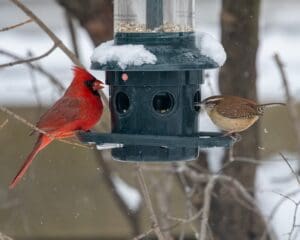
If there’s one thing that we know in Massachusetts, it’s that weather can be fickle. Spring is finally here, but a lot of times weather will say, ‘Hold my beer’ and throw another cold snap at us without warning. So, what can you do to help protect plants and seedlings from the sudden cold? Below are four tips that you can use for showing that cold weather who’s boss and to protect plants in your care.
Protect Plants by Shifting the Pots to Protected Spots
One of the easiest ways that you can protect your plants when there’s a possibility of frost is to put them in a more sheltered location. This could be under a deck, inside your shed or garage on your porch. If you place them on porch, it’s best to cluster your pots together up against one of the walls. This makes it a lot simpler to cover them with a tablecloth or frost blanket. It also will raise the humidity around the plants, which helps with elevating the temperatures near the leaves since when air is moist it cools down slower.
Remove Hanging Baskets from Hooks
Lowering them and putting them in an protected spot on the floor or ground is a good way to keep them protected from frost. If your baskets are too full so that they can’t directly sit on the floor without stems being broken, you can turn over a pot or bucket and use that. The air close to the ground’s going to remain longer than that air that’s up higher.
Water Your Plants
It’s a good idea to water your plants right before sunset. As the water evaporates from the soil overnight, it’s going to warm up the air around your plants. But if the temperature is going to be below 32, be careful. If you have your plants in large pots, it shouldn’t become frozen solid. However, the soil in the smaller pots might. When you have these types of smaller containers, such as cell packs or 4” pots, put an old sheet or beach towel over top of your plants to give them extra protection.
Use Floating Row Covers to Protect Plants
If you already have a garden planted and you need to cover something that can’t be moved, floating row covers, such as frost blankets, can be helpful. These are made of plastic or synthetic fibers. The thicker the blanket, the better protection that you will have. Use them like towels or sheets. Put them over the plants prior to dusk. Then remove the covers when the frost has been melted. Since these let light go through, they can be left in place during extended cold snaps. Anchor the edges to keep the cold air from getting in.
These are just four tips that you can use to help protect plants from frost. Thank you for reading our blog and please comment below. We have plenty of other helpful hints that you can use, so please explore our other posts and get in touch with us if you have any questions or would like to know about our services. We look forward to hearing from you!



